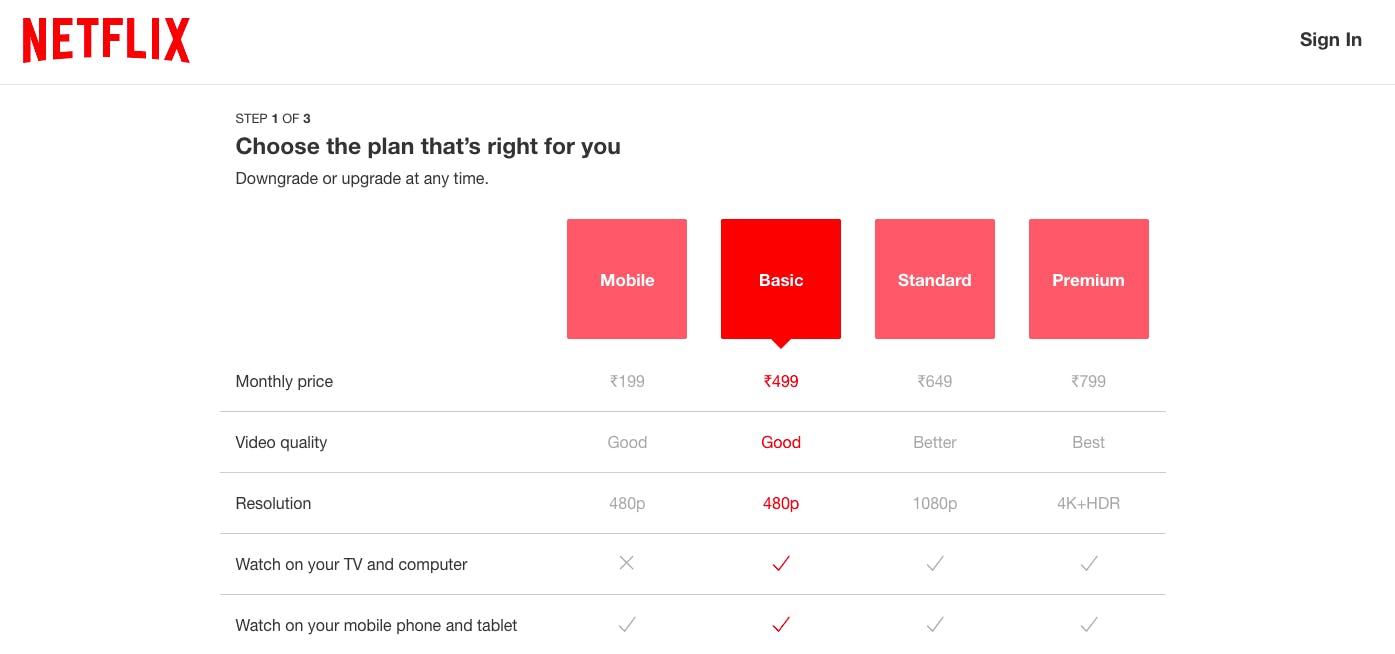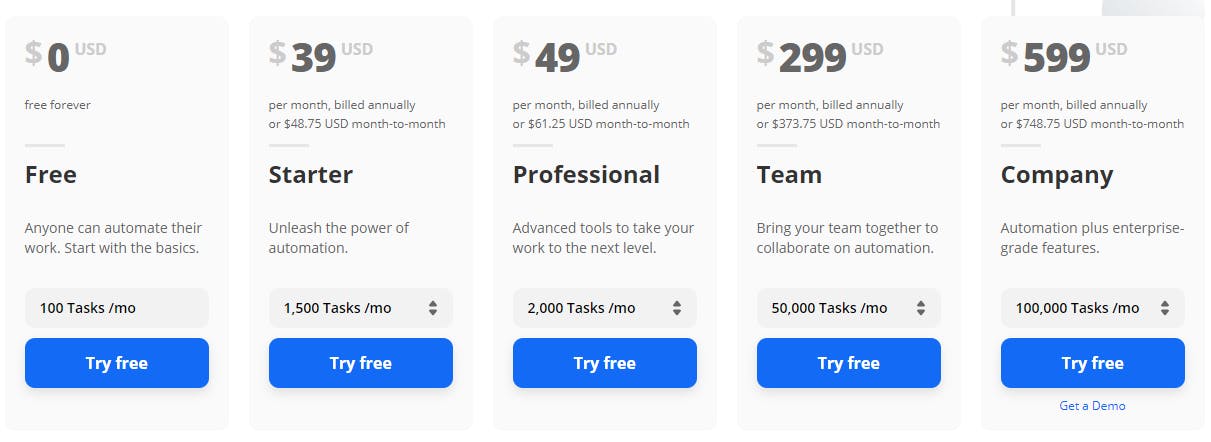SaaS Pricing Models: Which One is Right For Your Business?

Competition in the SaaS industry is fierce. There are several SaaS pricing models to choose from. From subscription-based pricing to usage-based billing, there's a model that will fit your business needs.
To stand out, you must strike a balance between offering a competitive price and ensuring your company is profitable.
The good news?
In today's post, we'll outline the most popular SaaS pricing models and help you decide which is right for your business.
We'll also provide tips on optimizing your pricing strategy to increase profits and lifetime value (LTV).
Whether you're just getting started with pricing your SaaS product or you're looking to make changes to your current pricing model, this post will give you the information you need to make informed decisions.
Table of contents
A Quick Introduction to SaaS Pricing Models
Before we dive into the details of each pricing model, let's quickly review the basics.
SaaS pricing models are the foundation of your pricing strategy. They determine how you charge customers for your product and services.
The most common SaaS pricing models are;
- Subscription-based: Customers pay a recurring fee, typically on a monthly or annual basis, to access your software.
- Usage-based: Customers are charged based on their usage of your software. This could be measured in the number of users, API calls, or any other metric that makes sense for your business.
- Feature-based: Customers are charged based on the features they use. This is similar to usage-based pricing, but it's typically measured in a more abstract way, such as the number of "projects" or "teams" they create.
Some companies mix and match these models to create a hybrid pricing strategy. For example, they might offer a subscription with usage-based pricing for additional features.
Some others, like HubSpot, use a freemium model where they offer a basic version of their software for free and charge for premium features.
Ultimately, there's no "right" way to price your product. It depends on your business model, goals, and target market.
Now that we've covered the basics, let's take a closer look at each of these SaaS pricing models.
Model 1: Subscription-Based Pricing
Subscription-based pricing is the most common SaaS pricing model.
In this model, users pay a recurring fee, typically on a monthly or annual basis, to access the software. This pricing model is often the fairest to customers, as they only pay for the time they use the software.

However, subscription-based pricing can be complex to set up and manage. You'll need to carefully consider how your pricing will scale as your customer base grows.
For instance, you'll need to decide whether to charge customers based on the number of users, features used, or some other metric.
You'll also need to consider how you'll price different levels of service, such as premium support or additional storage.
If you're just getting started with subscription-based pricing, we recommend using a simple, flat-rate structure.
This means charging all customers the same price, regardless of the number of users or features they use.
Once you have a better understanding of your customer's needs, you can begin to offer different pricing tiers with different features.
Model 2: Usage-Based Pricing
With usage-based pricing, customers are charged based on their actual usage of your software.
This model is popular among companies that offer cloud-based services, such as storage or computing power.

In this pricing model, customers only pay for the resources they use. This can be a great way to save money, as customers only pay for what they need.
To properly price your product using this model, you need to have a good understanding of your customer's needs.
This model is best suited for customers who are comfortable with pay-as-you-go models and who have a good understanding of their own usage.
Some other things to keep in mind with this pricing model include:
- Usage tracking: You need to be able to track usage in order to bill customers properly. This can be done through metering or some other tracking method.
- Differentiation: It's important to offer different pricing options for different types of usage. For example, you may want to charge a higher price for higher levels of storage.
- Flexibility: This model can be flexible, as customers can easily scale their usage up or down as needed.
Model 3: Featured-Based Pricing
With featured-based pricing, customers are charged based on the features they use.
This model is popular among companies that offer a wide range of features, such as project management software or enterprise CRM systems.
In this model, customers can choose which features they want to use, and they're only charged for the ones they use.
This type of pricing can be complex to set up, as you need to consider which features to include in each pricing tier carefully.
You also need to consider how the pricing will scale as customers add more features.
For example, you may want to charge a lower price for basic features and a higher price for premium features. Or, you may want to charge a flat rate for all features.
The key to this model is to offer different pricing tiers that meet the needs of different types of customers.
For instance, you may want to offer a basic tier for small businesses that need only the essential features and a premium tier for larger businesses that need more advanced features.
How to Choose the Right Pricing Model For Your Business
Choosing the right pricing model for your business can be a complex decision.
There are many factors to consider, such as your business model, customer needs, and overall goals.
Let's explore each of these factors in more detail.
Factor 1: The Nature of the Problem You Solve
The first factor to consider is the nature of the problem you solve.
Some businesses offer products that are essential to their customers, such as storage or computing power.
Other businesses offer less essential ones, such as project management software.
This distinction is crucial as it will help you determine which pricing model best suits your business.
If you solve a recurring need, such as bookkeeping, customers may be more likely to accept a subscription-based pricing model.
Of course, this is not a hard and fast rule, and there are exceptions.
The bottom line is that you need to carefully consider the nature of the problem you solve when choosing a pricing model.
Factor 2: Your Customer's Needs
Another important factor to consider is your customer's needs.
Some customers:
- Need a lot of features, while others need only a few.
- Need your product on a regular basis, while others need it only occasionally.
- Are price sensitive, while others are not?
Ultimately, it would be best if you chose a pricing model that meets the needs of your target market.
For example, if you're targeting small businesses, they may be more price sensitive than larger businesses. They may be more likely to sign up if you offer a lower price.
On the other hand, enterprise companies may be more interested in features than price. They're also more likely to need your product on a regular basis.
As a result, they may be willing to pay more for a subscription that includes all the features they need.
The bottom line is that you must carefully consider your target market's needs when choosing a pricing model.
Factor 3: Your Business Model
Some businesses are designed to generate a lot of revenue from a small number of customers, while others need a large number of customers to generate the same amount of revenue.
Your business model will help you determine which pricing model is best suited for your needs.
For instance, if your business model relies on a small number of high-value customers, then you may want to consider a feature-based pricing model.
This model allows you to charge a higher price for customers who need more features.
On the other hand, if your business model relies on a large number of low-value customers, then you may want to consider a usage-based pricing model.
This model allows you to charge a lower price for customers who need only a few features.
Again, this might vary from business-to-business. It's wise to experiment with different models to see which one works best for your needs.
Factor 4: Your Overall Goals
Finally, you need to consider your overall goals when choosing a pricing model.
Some businesses are focused on generating revenue as fast as possible, while others are focused on building long-term relationships with their customers.
Some businesses want to offer the lowest prices possible, while others want to premium prices for their products.
Ultimately, you need to choose a pricing model that aligns with your overall goals.
Conclusion
There is no one-size-fits-all answer when it comes to choosing a pricing model.
The best pricing model for your business will depend on a number of factors, including the type of product you offer, the needs of your target market, and your overall goals.
You'll need to experiment with different models to see which one works best for your business.
What's important is that you take the time to consider all of the factors before making a decision. Choosing the wrong pricing model can have a significant impact on your business, so it's important to get it right.

